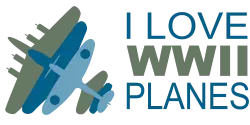Awesome Aircraft From WWII
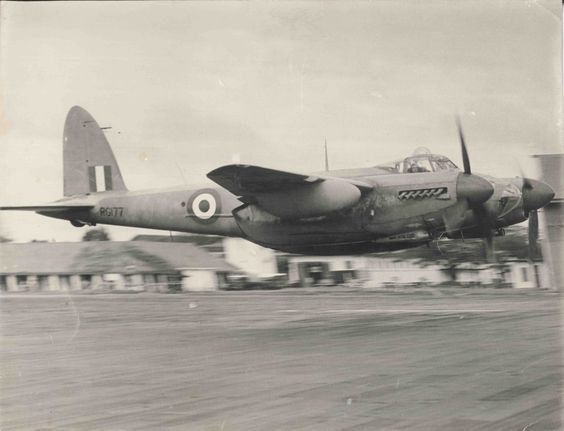
Boulton Paul Defiant
The Defiant was a strange aircraft, without any forward firing armament. The secret weapon of the Defiant was its rear turret. It was originally designed to intercept bombers, with the pilot positioning the aircraft and the gunner firing on the enemy.
It was thought splitting the two tasks would allow each one to be performed to a higher standard. It didn’t fare very well against more capable German fighters, but was affective against bombers. The addition of radar and a switch to night missions allowed the Defiant to shine.
Bristol Beaufighter
The Bristol Beaufighter was a multi-role aircraft, a rather advanced concept for the time. It was capable of doing just about anything, including as a bomber, a fighter, ground attack and was one of the few aircraft in the earlier war years that could carry both a night fighter radar an heavy armament. In this role it was particularly effective during the Battle of Britain.
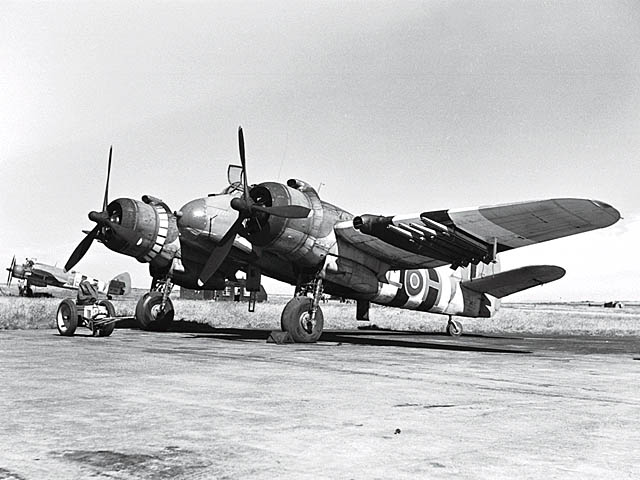
Curtiss P-40 Warhawk
The Curtiss P-40 Warhawk was the US’s primary fighter at the start of WWII. At the time, its powerful Allison engine gave the aircraft great performance. However as more modern aircraft arrived to battle, the P-40 became outdated. The aircraft was rugged, and could withstand alot of punishment. Despite being quickly surpassed by other planes, it served a valuable role in North Africa and China.
Dornier Do 217
The Do 217 was an improved version of the Do 17 in almost every way. It carried more bombs faster and further, so much in fact that it some were classed as heavy bombers. It was also employed as an effective night fighter. In 1943, the Do 217 was the first aircraft to release a precision guided weapon, when it used the Fritz-X radio guided bomb against an Italian Battleship. Its twin 1,850 hp DB 603 engines gave it an impressive top speed of 350 mph at 18,700 feet.
Focke-Wulf Fw190
The Fw 190 first arrived in combat in September 1941, where it was met by the British. The aircraft was a terrible shock to the Allies, who up until that point were comfortably winning air battles with the Spitfire.
The arrival of the Fw 190 completely changed this, it was faster, out manoeuvring, out-gunning and out-climbing the Spitfire. Despite its relatively early introduction, the Fw 190 was continuously improved during the war, taking it from strength to strength. By the wars end, the Fw 190 was still one of the best aircraft in the sky.

Grumman F6F Hellcat
The F4F Wildcat was replaced in the Pacific by the F6F Hellcat, which dominated its Japanese adversaries. It was introduced in September 1943, and fought its first major battle in December 1943, where it downed 28 A6M Zeros for only two losses in return.
Its 2,000 hp Pratt & Whitney R-2800 Double Wasp allowed the Hellcat to operate affectively at any combat altitude, and a top speed of almost 400 mph. It was very rugged and well suited to a carrier-borne life. The plane was flown by the most American air aces of all time, with 307 pilots reaching ace status while fighting with it.
Macchi C.202 Folgore
While not often mentioned in conversations about aircraft, Italy’s Folgore was a very good one. It used an Italian built version of the famous DB 601A inverted V12 engine, the same used in the Bf 109. Its top speed was 370 mph, and was considered a good dogfighter. It out performed both the P-40 and Hurricane, but wasn’t quite up to the level to tackle the P-51 Mustang and Spitfire.
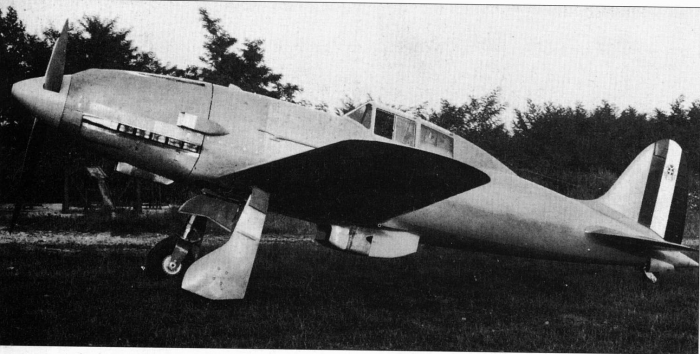
Messerschmitt Bf109
For pure longevity of performance, the Bf 109 has no rivals. It first engaged in combat in 1937 during the Spanish Civil War, and wasn’t retired until the mid 1950s. At this time the aircraft was unmatched in the skies. This status would remain until it clashed against the Supermarine Spitfire during WWII.
The aircraft were almost destined rivals, both beating each other in different metrics. As the war continued, both aircraft were heavily upgraded, where the Spitfire began to more significantly outperform the Bf 109. It did however remain competitive until the close of WW2.
It also holds the record for the most produced fighter aircraft in history, with 34,000 being built. A record that most likely will never be beaten.
Messerschmitt Me262
The Me 262 has the title for history’s first ever operational jet fighter. Adolf Hitler had high hopes for the aircraft to win the war.
It first entered service in late 1944, powered by two Junkers Jumo 004 turbojet engines. The aircraft was developed during the war, and was rushed towards the end of its design phase, leading to some serious reliability issues.
The Germans experienced great difficulty producing them in large quantities, partly due to their position in the last year of the war, and also because of the aircraft’s complexity. Nevertheless, it was very well armed and blisteringly quick, far faster than any propeller aircraft in service, and was feared by Allied airmen.
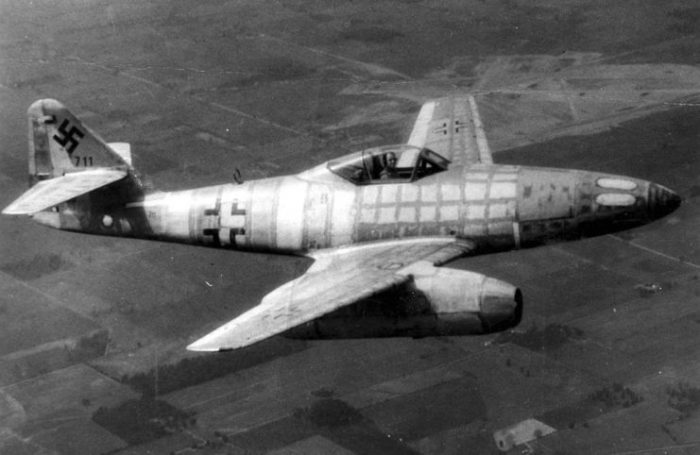
Mitsubishi A6M Zero-Sen
Japans most famous plane, and one of the most recognisable aircraft from WWII, the Zero was a formidable fighter upon its introduction in 1940. It was very light, and incredibly manoeuvrable, an advantage that only started slipping in the later war years.
At first, the Zero could out-dogfight anything in the Pacific with its great agility and good armament of two 7.7 mm machine guns and two 20 mm cannons. However, the source of its advantages, its lightweight, would eventually be its downfall. The 950 hp engine couldn’t be replaced by something more powerful, and its airframe was fragile.
After inspecting the Zero, the Allies discovered these information. With this knowledge and a new generation of fighters, the US managed to dramatically turn the tide against the Zero. Despite this, it was used until Japan’s surrender in 1945.
Republic P-47 Thunderbolt
The P-47 Thunderbolt first flew in 1941, and was in service in 1942. It used the massive 18 cylinder Pratt & Whitney R-2800-59 radial engine that produced 2,200 hp. This was needed too, because the P-47 is the heaviest and largest single piston engine fighter ever built, weighing in at 8 tons fully loaded, equal to the combined weight of two empty P-51 Mustangs.
It took a while for pilots to adjust to the plane, and for the aircraft itself to reach its potential, but when it did it was one of the better fighters of the war. It was also the US’s most produced fighter of WWII.
Known as the ‘Jug’ due to its milk jug-like fuselage, it was liked by its pilots for its spacious and air conditioned cockpit. While a great fighter, it was great in the ground attack role too, proving itself as an incredibly tough aircraft.
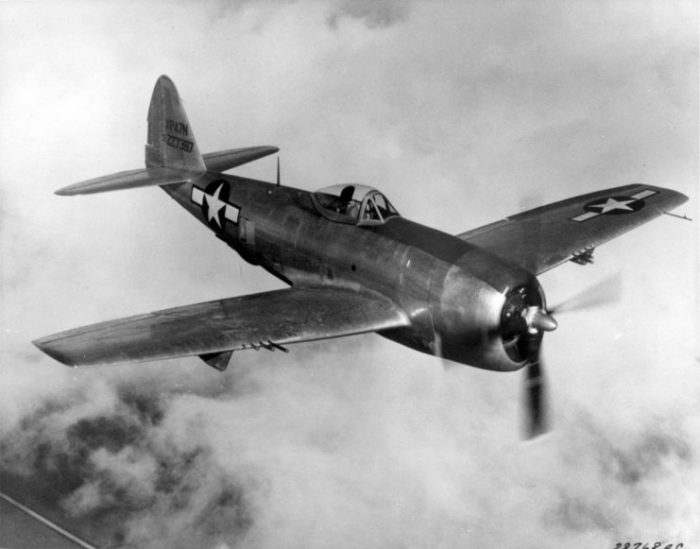
Lockheed P-38 Lightning
One of the more distinct looking fighters of WWII, the twin-boom P-38 was a very capable aircraft. Its turbo-supercharged engines provided 1,600 hp at take off, and allowed it to still perform well at high altitudes. It was introduced into service in 1940, and was the only mass produced fighter in service with the US from start to finish of their involvement in WWII. It was the first fighter to fly faster than 400 mph. Its top speed was over 420 mph.
It was the first Allied fighter aircraft capable of making the trip from the UK to Berlin on bomber escort missions. It would later be superseded in this role by the P-51 Mustang.
de Havilland Mosquito
The Mosquito is potentially the most capable aircraft on this entire list. The ‘Mossie’ or ‘Wooden Wonder’ was in almost every way an incredible plane. It was constructed mostly from plywood, making it very light for its size, and cheap to produce. It was powered by two 1,700 hp Merlin V12 engines that gave it an exceptional top speed of well over 400 mph, enough to make it one of the fastest aircraft on the planet at the time of its introduction.
It was a multi-role aircraft, and one of the first that truly excelled in this role. It did quite literally everything an aircraft can do; night fighting, fighter bomber, medium bomber, reconnaissance, photography, precision strikes, bomber escort, bomber pathfinding, intruder, anti shipping, and many more.
You name it, and the Wooden Wonder did it!
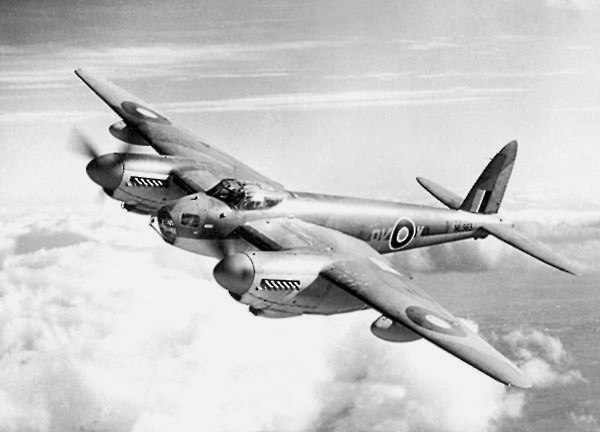
Supermarine Spitfire
One of the most famous aircraft of the war, and perhaps ever, the Spitfire was sleek, modern, adaptable and well liked aircraft. First flying in March 1936, it would quickly prove to be one of the best aircraft of the war. Its famous Merlin V12 engine gave it brilliant performance, and although lightly armed to begin with, ended the war with some powerful weaponry. The aircraft has been described by many pilots as an absolute dream to fly, with many agreeing it’s superior to the P-51 Mustang.
The Spitfire’s legacy began with the victory of the Battle of Britain, and has since become a British icon ever since.
The Highly Maneuverable Nakajima Ki-43 ‘Oscar’ in 27 Photos
The Spitfire was repeatedly improved during the war, going from the Mk I to the Mk XV by 1944. In October 1944, a Mk KXIV shot down a Messerschmitt Me262, the first jet fighter to be brought down during the war.
